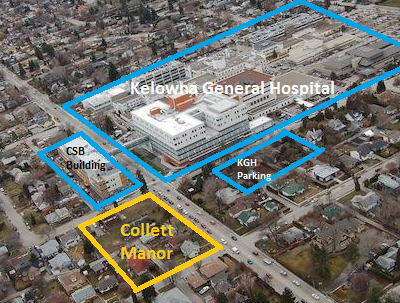Updated: Oct 9, 2021
A sustainable building method that has been popular for years with the sustainable and off-the-grid community; Earthbag Construction is one of Sustainable Architecture’s best-kept secrets, here's why!
Earthbag Constructed Buildings are far from a new invention, in fact, they are quite the opposite. For millennia, Humans have built homes and shelters from the Earth beneath our feet. Unfortunately, however, somewhere along the way, we lost sight of our innate need for and connection to nature. With many modern-day homeowners perceiving the idea of Earthbags as primitive or unhygienic.
Contrary to this belief, however, they provide numerous human and planetary health benefits. One of the key benefits to Earthbag Buildings is the extreme cost savings, they are literally dirt cheap! Dirt to fill the bags is usually obtained right at the building site, eliminating the purchase and transportation costs of most traditional building materials.
Additionally, Earthbag Buildings provide natural insulation in the form of thermal mass, helping to keep the home cool in summer and warm in winter. This could easily be optimized through the incorporation of passive solar design to reduce artificial heating and cooling requirements. Earthbag Buildings are also great for Indoor Air Quality. Finally, the fill material is completely non-toxic and will not off-gas noxious fumes or Volatile Organic Compounds.
Earthbag Buildings are filling a unique niche in the growing quest for Sustainable Architecture. The bags can be filled with natural materials found on-site, which drastically decreases the embodied energy and carbon footprint that is commonly associated with the manufacturing and transportation of building materials. The plastic in the polypropylene bags, the cement aggregate, and the steel barbed wire used usually accounting roughly 5% of the total building material.
Structurally speaking, Earthbag Constructed Buildings tend to be extremely strong, and durable.
The materials used also make the home naturally fire-resistant and able to withstand extreme damp and dry climates equally well given that the fill material is generally composed of dirt and minerals. Thus, they are not subject to decomposition (even when damp), and are also not attractive to vermin, or prone to burning. Therefore, Earthbag Constructed homes will tend to outlast other homes. Earthbag Buildings have also been shown to withstand earthquakes and other natural disasters. Thus they are even being used around the world as emergency shelters, and to rebuild homes in emergency-stricken areas.
Earthbag Buildings are also uniquely versatile. Since they can be stacked in a wide variety of shapes, including domes, they have the potential to virtually eliminate the need for common tensile materials in the structure. This includes the wood and steel that are often used for roof construction. In doing so, Earthbag Buildings not only save more energy and decrease pollution, they even play an indirect role in helping save our forests. Allowing for much needed carbon sequestration.
Another unique aspect of Earthbag Buildings is the simplicity of their construction. Earthbag Buildings can be built by virtually anyone with access to sandbags and a bit of soil, making them both an attractive and affordable option. The most common way to approach Earthbag Construction is often by digging a trench on site, approximately to the mineral subsoil. The next step is to partially fill it with gravel to create a solid foundation for the structure.
Woven bags are then filled with the desired fill material and placed into the trench. Strands of barbed wire are placed in between each layer to avoid slippage of the bags. This also helps in resisting outward expansion of the walls. Each successive layer of filled bags is then offset by a half bag’s width; forming a staggered pattern. This is done in order to push down on the barbed wire, and essentially securing the bags in place.
After the walls are constructed, a roof can then be formed by gradually sloping the walls inward to create a dome or barrel-vaulted structure. A traditional roof can also be added, or there is also the option of adding a living roof to take the building’s sustainability over the edge. Windows and doors can then be created using masonry lintel or brick-arch building techniques. Some buildings even opt for skylights to be added during construction by placing bottles between the rows of bags to create the desired gap. An exposed outer surface needs to be added to the Earthbag Construction - usually comprised of cement-based stucco, lime or earthen plaster - to prevent damage from external factors such as moisture or UV rays in the long run.
When constructing the common Earthbag Buildings, Solid-weave polypropylene bags tend to be the most popular choice to use. This is due to their water-damage, rot, and insect resistance. However, other natural fibers such as hemp and burlap can be used, provided they are filled with a high-percentage clay material. The clay helps the bags sculpt themselves more securely around the barbed wire. Thus improving the tensile strength and durability of the walls. Other options, such as sand, stone dust, and gravel, that have the capacity to survive prolonged soaking or flood conditions better can also be used. However, they may need special bracing during construction.
Another factor to take into consideration when deciding what to use as a fill material is the material’s thermal insulating properties. This is particularly important when building in climates that experience either extremes of temperature. Clay and sand both have good thermal and heat retentions capacities, making them a good choice for passive solar design in cooler climates, given that they keep the internal temperature of the structure fairly stable throughout the year.
Earthbag Buildings may seem a thing of the past, but they’re unique ability to solve pressing present problems such as Climate Change, makes them worth considering in this new and every-changing world. We have observed time and time again that Nature is the most inspirational and creative designer. It is time for us to return to the abundance it has to offer us, and start designing in alignment with the beauty of natural forces, rather than against them, and see if anything changes. My bet is they will.
Video Courtesy of EcoPeace Middle East























